This site is part of various affiliate programs. Links may give us a small compensation for any purchases you make, at no additional cost to you. Please read the disclaimer policy for full details.
You’ve probably only had your TV for two or three years, but now your Hisense TV has a blue tint. The backlight is working and there’s no other problems, so what’s going on?
We’re going to cover every proven fix for the blue tint for your Hisense, and I’m sure that at least one of these fixes will work for you.
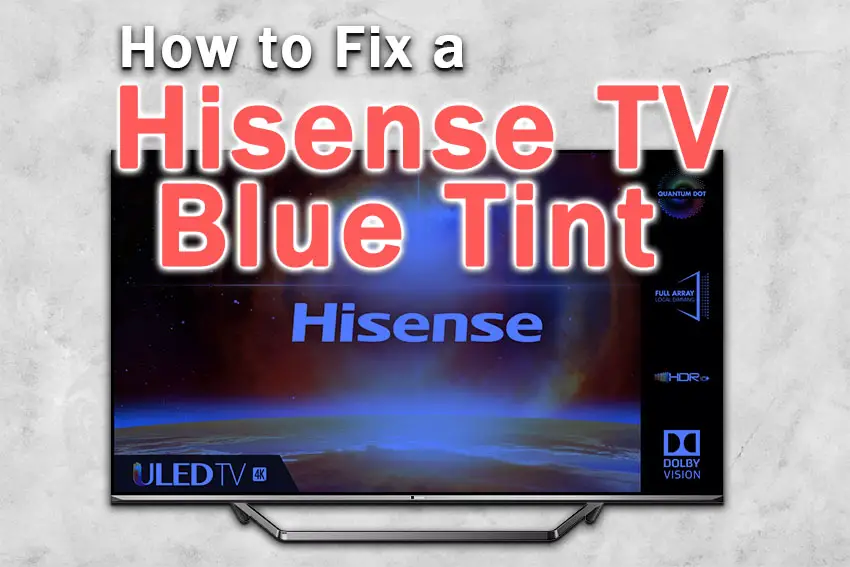
Hisense TV Blue Tint
If you’re Hisense TV has a blue tint, you should power cycle it to reset it. Unplug your TV and wait for 30 minutes. Hold down the power button on your TV for 15 seconds, then plug your TV back in and the blue tint should be gone.
This simple reset works in the vast majority of cases where you see a blue tint on your TV, but sometimes the issue lies with the backlight which power cycling won’t help resolve.
Before we take a look at the more complex fixes to the backlight though, let’s first cover the simpler troubleshooting steps that can often resolve the issue much quicker.
1. Disconnect Your TV
Running your Hisense TV through a power cycle will help to clear any potential issues that could be caused by its capacitors retaining charge or internal flash memory holding onto a program preventing the TV from starting.
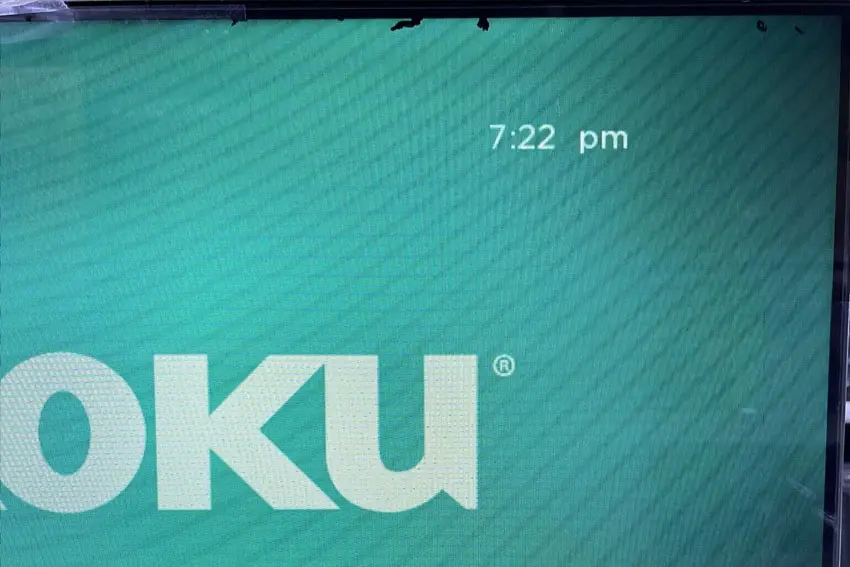
This is quick and painless and won’t cause you to lose any of your saved settings.
- Unplug your Hisense TV and hold down the physical power button beneath the IR receiver on the TV for at least 15 seconds.
- Wait for at least 30 minutes for any residual power to drain.
- Plug your TV back in and try switching it on. You should see a red light if you have been successful.
Although this seems a very basic step, don’t overlook it because in the vast majority of cases a simple soft reset fixes most issues.
2. Remove Any Connected Devices
There are a number of devices that you can connect to your Hisense TV that have the potential to affect the image in a way that makes it seem faulty, like adding a blue tint.
You should remove the cables attaching any devices physically connected to your TV (eg. HDMI, USB, etc):
- Switch off your TV.
- Remove any HDMI or other physical cables connected to the back of your TV.
- If you have any compressed air, use that to clean the contacts both of the cable and in the connector on the TV. If you don’t have compressed air, then blow gently on them.
- Firmly push the cables back into their slots on the TV.
- Switch your TV back on again.
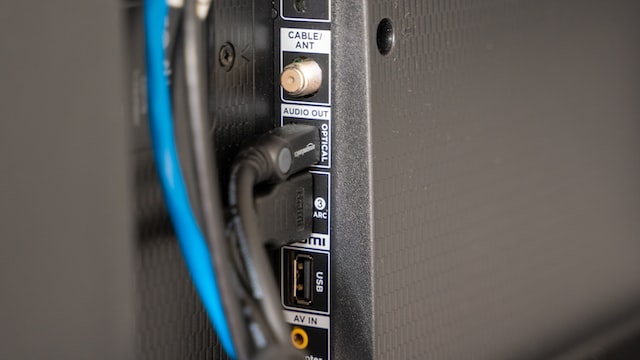
It’s a good idea to take a look at any cables you have removed for damage, and also to look at the ports on your TV, to confirm that there is no potential short circuits being created.
You can also try removing all external devices, including those connected by Bluetooth and any coaxial or signal cables, so that the TV only has a power cable going into it.
When you turn your TV on, this means the screen will be black as it is not receiving any picture, potentially making it tough to see any evidence of a blue tint.
Pull up the on-screen menu to see if the blue tint is still there. If it is, this means that your external connections are fine and the problem is located within the hardware of your TV.
If the blue tint has gone, then try re-seating your HDMI and other cables one by one, until you find the damaged cable that needs replacing.
3. Update Your Firmware
Software and firmware issues have been known to cause problems with the display on Hisense TVs.
As with any product, you should ensure that you have updated your TV’s firmware to the latest version, even if it is new.
Most Hisense TVs support auto-updating of firmware, but you can’t assume that this is turned on for you.
Check Over-the-Air (OTA) firmware updates are enabled for Smart Hisense TVs by pressing the Home button on your remote, then go to the “cog” for settings, then Support and System Update. Make sure the Auto Firmware Upgrade is enabled.
If your TV doesn’t have OTA support:
- Press Home on your remote.
- Click the “cog” icon.
- Go to All.
- Then About.
- And System Update.
- Click Detect to check for updates.
For older Hisense TVs, even this option for updating your firmware might not be available. In this case, you need to download the latest firmware and install onto a USB stick to install it manually on your TV. Call Hisense Support and they will be able to guide you through the process.
4. Check Your Picture Settings
Most Hisense TVs have an option to change the color temperature or other aspects of the picture.
Navigate to the Home screen, then the “cog” icon for settings and go to the Picture menu.
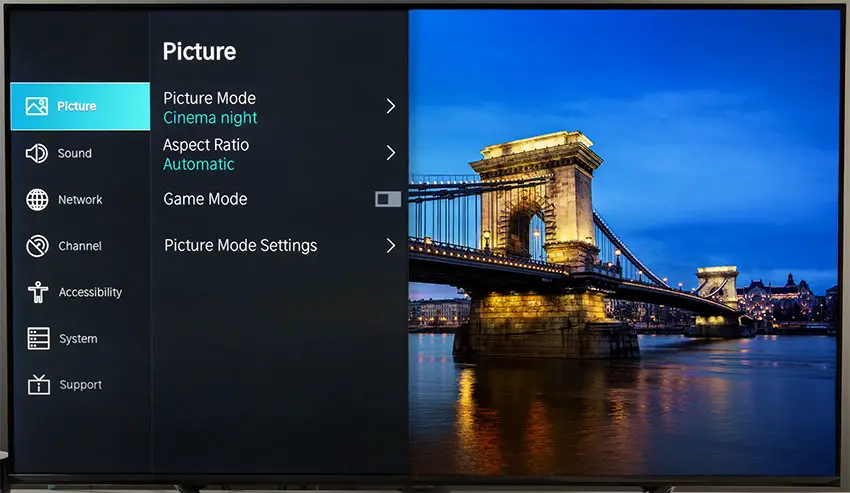
You can try the various picture modes to see if they fix the blue tint, and if not, then go to Picture Mode Settings.
And then choose Expert Settings. This allows you to change the color space of your TV and hopefully will let you change it enough to totally remove the blue tint.
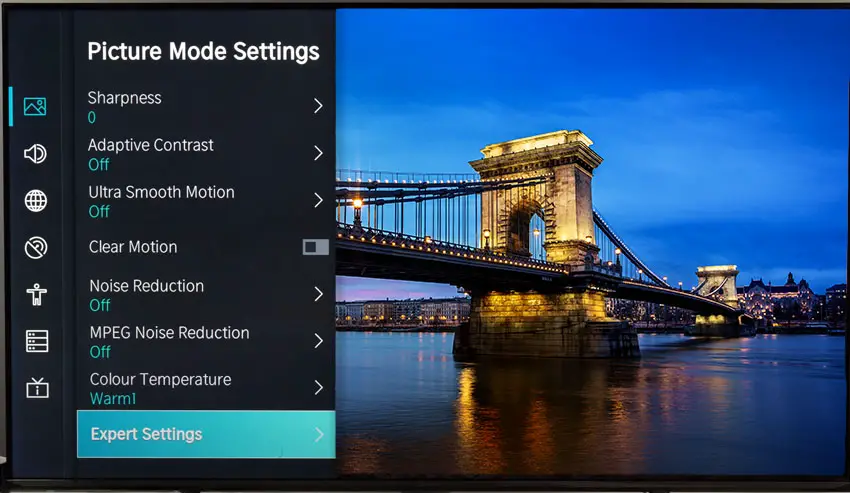
Then you want the Color Tuner option which will allow you to change the hue of each color channel.
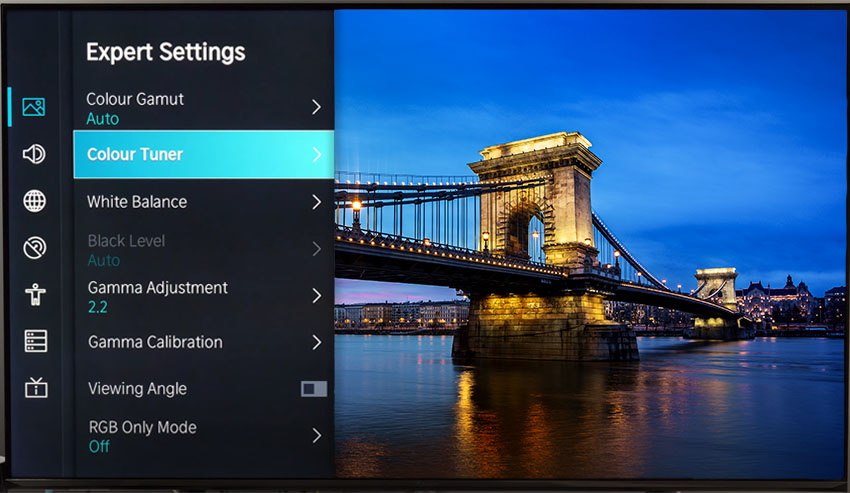
Try going into the Blue channel and pushing the hue slider one way and see if you can get the blue tint to disappear.
You can also try changing the Gamma and White Balance, and hopefully you will be able to get a decent picture without any color tint.
You will probably be able to get a better image, but you might struggle to actually fix the problem entirely this way.
You could try factory resetting your TV, but it is unlikely to help with a blue tint. Instead, you will have to move onto a more involved fix.
5. Check Your Warranty
Although you are unlikely to see a blue tint on a Hisense TV under one year old, this can happen. If so, return your TV under warranty and get it fixed.
If your TV is out of warranty and still has a blue tint, then you’ll have to open up the back panel and get at the backlights.
Be warned that this is quite an involved process, but it is definitely possible to do at home.
6. Replace Your Hisense’s Backlights
Blue tints are very common on TVs older than two or three years. This is because of the design of the LEDs used in the backlight and the fact that they can easily burn out.
Hisense TV backlight panels use blue-light LEDs as their base, with a phosphor yellow coating over the LED.
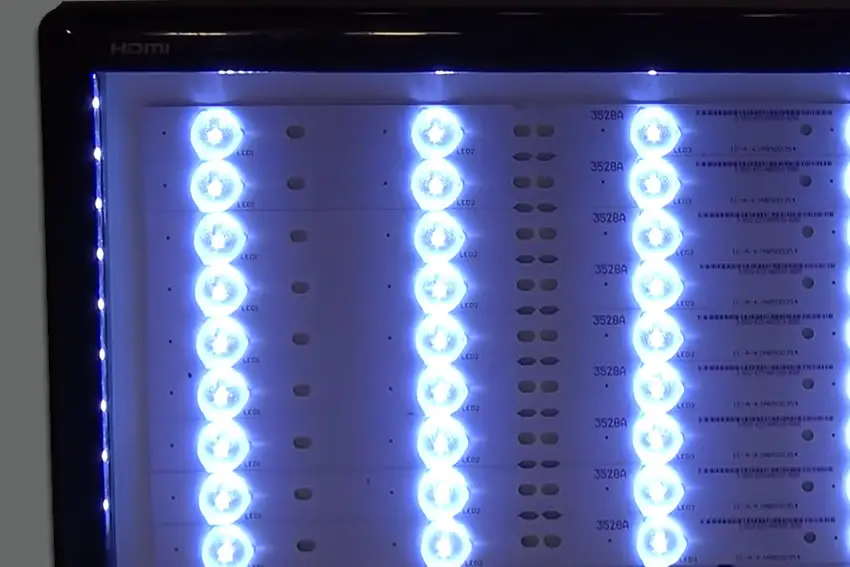
The blue light shining through the yellow phosphor creates white light, which is what you see on a correctly functioning TV.
But after a couple of years, the phosphor can burn off, meaning that blue light shines through unfiltered, giving your screen a blue tint.
These LEDs must be replaced, but luckily this is not a terribly expensive job, although it does require quite a bit of work on your part.
If you’re not comfortable totally disassembling your TV, then now is the time to get a professional in, or to get a new TV.
Backlights on modern Hisense TVs come in LED strips of varying lengths. Older models used lengths that spanned the entire frame of the TV, but due to cost savings, more recent TVs use a set 16″ LED strip which is connected in series for each row to span your TV.
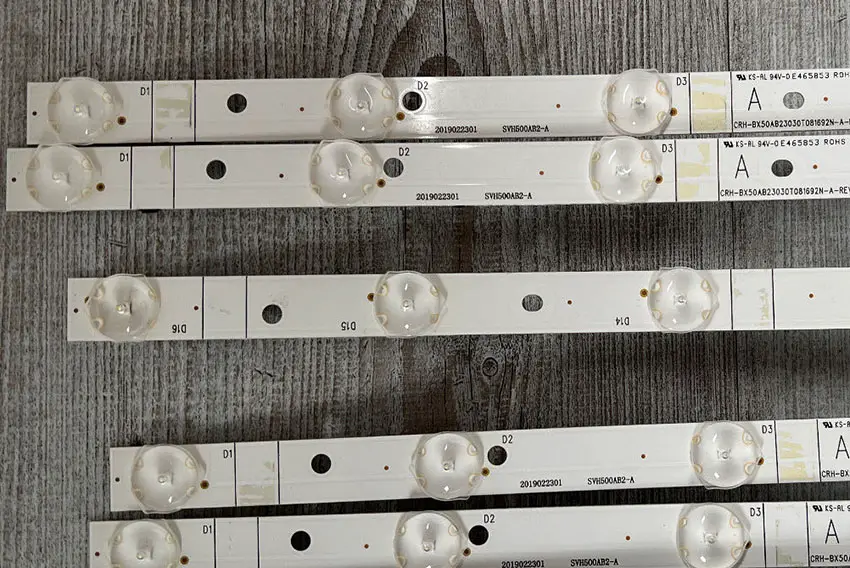
You can get replacement LED strips quite easily from Amazon or eBay – just put in your TV model number to be sure you are buying the correct type.
If you have a TV backlight tester to hand, then you could get away with testing every backlight strip in your TV individually and only replacing the broken strips, but it’s a lot less work to just replace every backlight and skip the testing, particularly given the relatively low price of LED backlights.
See the full process for replacing backlights below. This isn’t for the faint-hearted, but it will save you a considerable amount of money from either professionally repairing or replacing your TV.
To prevent LEDs burning off their phosphor layer in future, make sure you do not set your backlight to 100% brightness. The phosphor layer is destroyed by thermal degradation of the LEDs, caused by a too bright backlight setting. Reduce this to the lowest level you are comfortable with to prolong your backlight’s life.
So, How Do You Fix a Hisense TV Blue Tint?
You can fix a blue tint on your Hisense TV by:
- Power cycling your TV.
- Reseating the HDMI and other cables.
- Udating your TV’s firmware.
- Checking your picture settings and adjusting the blue channel’s hue.
- Replacing your Hisense TV’s backlights.
- Getting your TV fixed under warranty, by a repair shop, or replacing it.
If you don’t want to go to the trouble of changing the backlight in your TV, then your only option is to take it to a private repair shop or buy a new TV.
That said, it may be worth trying Hisense Support, particularly if your TV is under two years old. Although they are unlikely to fix it for you for free, some customers have been able to get a substantial, several hundred dollar, discount off a new TV by complaining.
And if you instead want a TV that is likely to run for years without issues, then buy an old plasma TV, many of which are happily still in use twenty years after purchase and which are far more reliable than new LED TVs!
Read More:
Hisense TV vertical lines on screen fix
LG TV blue tint? Try this easy fix
Hisense TV not turning on? Read this…
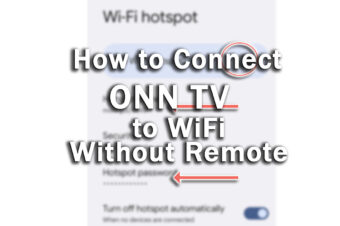


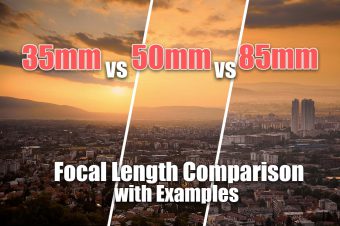

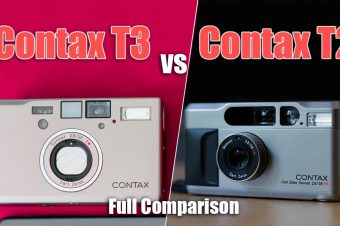
Leave a Reply